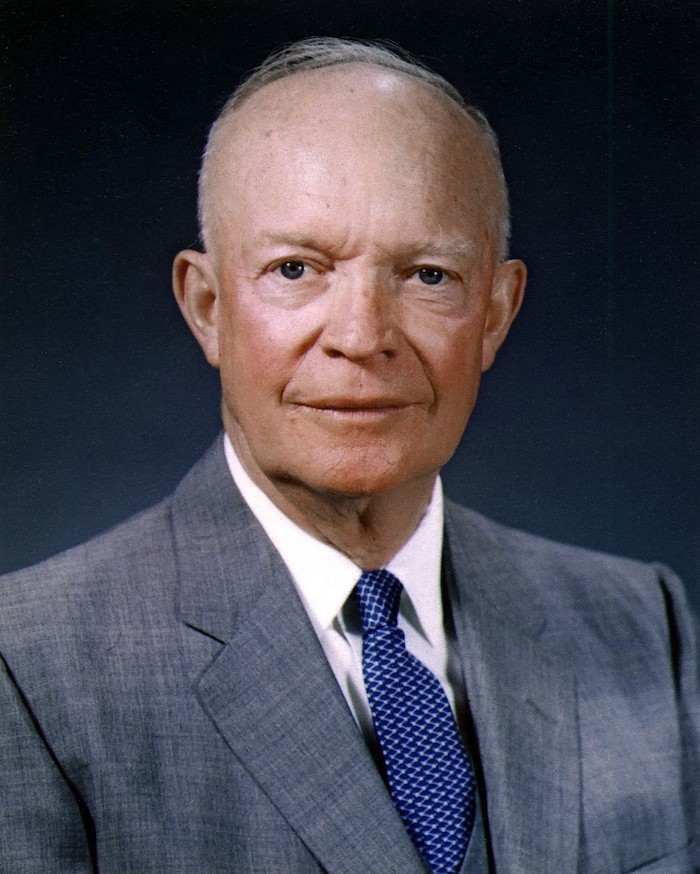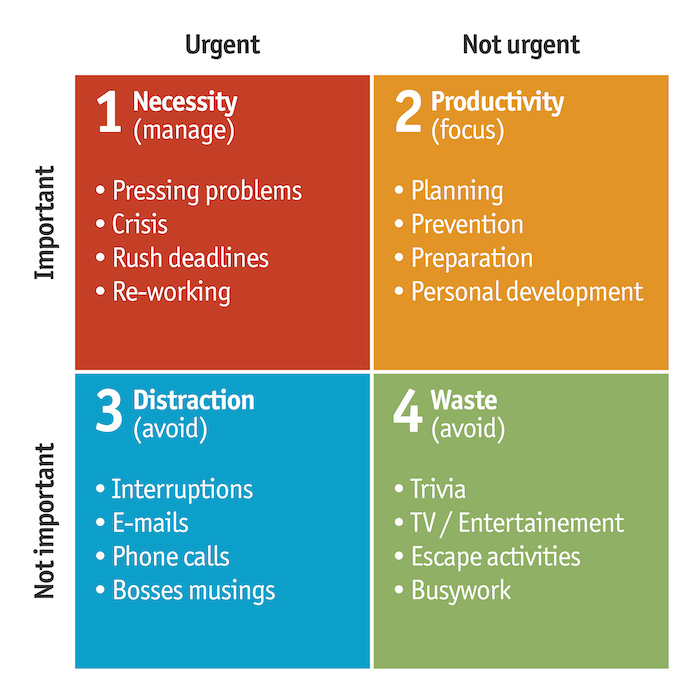I feel confident saying all of us could stand to improve our productivity. There’s always room to make faster, more accurate decisions about this morning’s priority, tomorrow’s top project and what needs to be pushed to next week.
We all know this is much easier said than done. I don’t know about you, but if I had a dime for every morning that I sat down at my desk, wrote myself an ambitious to-do list and said, “I can get this done no problem,” and then barely managed to get half of it done, I’d be a millionaire on a tropical island somewhere. Sadly, my struggles with productivity do not pay off, financially or in the workplace. The worst part is, of the half that I got done, I may not have hit the most important items either.
So how does this happen exactly?
As an editor, I can start the morning with my top priority — perhaps an article that’s due in the afternoon — but then I get a call back from a dealer I’ve been trying to reach. I take the interview right then (about 45 minutes), even though I won’t need that content for another week.
After the interview, I get an email about some online articles that need to be updated with new info. Instead of delegating the task, I volunteer to complete it myself. In the moment, I feel I’m being productive by completing this task immediately instead of letting it get pushed to the backburner.
After that, I head to Executive Editor of the Lessiter Media Ag Division Kim Schmidt’s office for a brief conversation about the speaker lineup for our upcoming 2023 Dealership Minds Summit (look for the event program in the April/May issue of Farm Equipment). We clarify some next steps in working with our speakers.
On the way back to my office, I stop to chat briefly with Assistant Editor, Mackane Vogel, about the recently released Summerfest lineup. For those of you who are unaware, Summerfest is one of the largest music festivals in the world, held right here in Milwaukee, Wis. Though we are somewhat disappointed in the artists (we aren’t big country music fans), we share previous Summerfest favorites and determine which days we will attend. Nightranger is back for what feels like the 20th year in a row. Perhaps I’m too young to appreciate them…
Suddenly, it’s 11:00 a.m., and I’ve made little to no progress on my article that’s due. I ask myself, “How did this happen?” I know I wasn’t sitting around twiddling my thumbs (minus the 5-minute Summerfest discussion), but I’m still not getting my top priorities done.
One person who has helped me manage my workload better is 34th President of the United States Dwight D. Eisenhower and his Urgent-Important Matrix.

34th President of the United States and master of productivity, Dwight D. Eisenhower.
Source: Eisenhower Presidential Library
This matrix, often called the Eisenhower Matrix, is designed to categorize tasks by urgency and importance, thus making immediate and future priorities clearer.
According to Eisenhower.me, a company that developed and maintains an Eisenhower Matrix app, “Dwight D. Eisenhower was the 34th President of the United States from 1953 until 1961. Before becoming president, he served as a general in the United States Army and as the Allied Forces Supreme Commander during World War II. He also later became NATO’s first supreme commander.
“Dwight had to make tough decisions continuously about which of the many tasks he should focus on each day. This finally led him to invent the world-famous Eisenhower principle, which today helps us prioritize by urgency and importance.”

Putting your to-do list on the Eisenhower Matrix at the start of the day can help clear items that may have felt like a priority out of your Urgent and Important box.
Source: Adobe Stock
On days that are particularly full of tasks that all seem to require my immediate attention, I will often pause for 5 minutes and place them on the matrix as objectively as possible. For instance, yesterday I helped proof the upcoming April/May issue of Farm Equipment, which I’d classify as Urgent and Important. In fact, I’ve already stopped writing this blog once to help with the proofing process.
With the matrix as our new productivity tool, let’s rewind back to the start of my hypothetical day and try my morning again.
I look at what I’d like to accomplish today and classify my article that’s due in the afternoon as the only item in the Urgent and Important category. This is the only project that cannot get pushed.
When my source calls, I think about where it falls on the matrix: Important but Not Urgent, since that interview won’t be needed until next week. I ask if they’re free 2 days from now for a half hour, and we schedule a zoom meeting. Now, I can stay with my top priority, with the added bonus of getting a video interview that could be posted to YouTube and extra time to prepare additional questions.
When the email goes out letting everyone know about the need to format certain articles, I go to the Matrix again: Urgent but Not Important. I should stop here to explain that certain things might fall on the Not Important part of the matrix even though they are actually necessary tasks to complete — the label should be used in the context of larger, crucial projects.
I send a message to Mackane, asking if he has the time to take care of it for me. He says he’s got room in his schedule and takes the task off my hands. Now I’m free to stick with my main task, and the pressing need to fix up these articles gets taken care of at the same time. Thanks, Mackane!
Instead of visiting Kim’s office to discuss working with our speakers for the Dealership Minds Summit, I send her an email with some ideas so she can respond when she has time. This is an Important but Not Urgent task, and it saves disrupting both our working momentums by handling it over email.
I decide to wait until after my article is done to take Summerfest with Mackane, as this is neither an Urgent nor Important task. And with the extra time I have to think about it, I decide that I actually am excited to see Nightranger for the third year in a row.
Now it’s 11 a.m. again, and I’m about 70% through my article and in good shape to get it done this afternoon. This not only helps my own productivity but also the productivity of our art department, who won’t be waiting an extra day on the article and potentially getting backed up in their own work.
Personally, the greatest benefit of the Eisenhower Matrix I’ve seen is a reduction in my stress levels. By staying as focused on the main targets as possible, I cut down on having to work into the night to catch up on projects, as well as the stress eating that accompanies late nights of writing. Summer is coming up, after all, and Flaming Hot Cheetos at 7 p.m. aren’t going to help me maintain my figure.
I hope you take one day this week to take the Matrix for a test drive. You might just find it takes a little stress out of your week and makes your team’s workflow a little less chaotic.





Post a comment
Report Abusive Comment